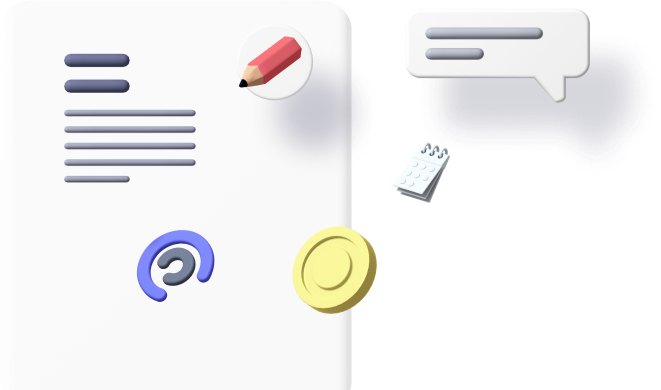
Introduction
In today’s healthcare landscape, administrative efficiency is as crucial as clinical effectiveness. As healthcare organizations strive to improve patient care while managing costs, IT automation has emerged as a powerful tool to enhance administrative processes. By streamlining routine tasks, reducing human error, and improving data accuracy, automation helps healthcare providers focus more on patient care and less on paperwork. A critical component of this technological landscape is Firewall Management Services, which ensure that automated systems are secure and compliant, protecting sensitive patient data. This article explores how IT automation enhances healthcare administrative processes and the integral role of firewall management services in this transformation.
The Importance of Administrative Efficiency in Healthcare
1. Reducing Administrative Burden
Healthcare organizations face an overwhelming amount of administrative work, from scheduling appointments to managing billing and insurance claims. Excessive paperwork can lead to burnout among staff and contribute to inefficiencies that impact patient care.
2. Enhancing Patient Experience
Streamlined administrative processes enable healthcare providers to offer a better patient experience. When administrative tasks are automated, patients experience shorter wait times, quicker responses to inquiries, and more timely access to care.
3. Ensuring Regulatory Compliance
Healthcare organizations must comply with a myriad of regulations, including HIPAA and other privacy laws. Automated systems can help ensure compliance by providing consistent documentation and tracking capabilities, reducing the risk of costly fines and legal issues.
How IT Automation Enhances Administrative Processes
1. Streamlining Appointment Scheduling
IT automation tools can simplify the appointment scheduling process, allowing patients to book, reschedule, or cancel appointments online. Automated reminders can also be sent via email or SMS, reducing no-show rates and improving overall scheduling efficiency.
2. Automating Billing and Claims Processing
Automated billing systems can streamline the claims process by automatically generating invoices and submitting claims to insurance providers. This reduces the time spent on manual entry and minimizes errors, resulting in faster reimbursements.
3. Improving Patient Data Management
Automated systems enable healthcare organizations to manage patient data more effectively. Electronic health records (EHR) can be updated automatically, ensuring that patient information is accurate and up-to-date. This not only improves clinical care but also enhances administrative workflows.
4. Enhancing Communication
Automation tools can facilitate better communication among healthcare staff. For example, automated messaging systems can notify staff of important updates, changes in patient status, or reminders for follow-up care, ensuring that everyone is on the same page.
5. Supporting Telehealth Services
With the rise of telehealth, automation plays a key role in managing virtual appointments. Automated systems can handle patient check-ins, collect necessary information prior to appointments, and facilitate follow-up communications, making telehealth more efficient and patient-friendly.
The Role of Firewall Management Services in IT Automation
1. Ensuring Data Security
As healthcare organizations adopt IT automation, the security of patient data becomes paramount. Firewall Management Services protect automated systems by preventing unauthorized access and ensuring that sensitive information remains secure. This is particularly important as more administrative processes move online.
2. Maintaining Compliance
Healthcare providers are required to comply with regulations that mandate the protection of patient data. Firewall management services help ensure that automated systems meet these compliance standards by implementing necessary security measures and conducting regular audits.
3. Protecting Against Cyber Threats
With the increasing prevalence of cyber attacks in the healthcare sector, robust firewall management is essential. These services monitor network traffic, detect suspicious activities, and respond to threats in real time, safeguarding automated administrative processes from potential disruptions.
4. Supporting System Integration
Effective firewall management facilitates the seamless integration of various automated systems within healthcare organizations. By ensuring that different applications can communicate securely, firewall management services enhance the overall efficiency of IT automation.
Case Studies: Successful Implementation of IT Automation and Firewall Management
1. Regional Healthcare System
A regional healthcare system implemented IT automation to streamline its administrative processes, including appointment scheduling and billing. By integrating automated solutions with robust firewall management services, the system achieved:
- Reduced Administrative Costs: The healthcare system reported a 30% decrease in administrative costs due to improved efficiency in billing and scheduling.
- Increased Patient Satisfaction: Patient satisfaction scores rose by 25%, attributed to shorter wait times and streamlined communication.
- Enhanced Security Posture: The implementation of firewall management services led to a 40% reduction in security incidents, ensuring that patient data remained protected.
2. Urban Community Health Clinic
An urban community health clinic adopted IT automation to improve data management and appointment scheduling. By leveraging firewall management services, the clinic experienced:
- Improved Workflow Efficiency: Administrative staff reported a 50% improvement in workflow efficiency, allowing them to process patient information and schedule appointments more quickly.
- Compliance Assurance: Regular audits provided by firewall management services ensured that the clinic met HIPAA compliance standards, reducing the risk of potential fines.
- Enhanced Data Protection: The clinic noted a 60% increase in data protection measures, minimizing vulnerabilities associated with automated systems.
Best Practices for Implementing IT Automation and Firewall Management
1. Assess Organizational Needs
Before implementing IT automation, healthcare organizations should assess their specific administrative needs. This includes identifying repetitive tasks that can be automated and determining the necessary security measures to protect sensitive data.
2. Choose Reliable Automation Solutions
Selecting reliable and user-friendly automation solutions is crucial for successful implementation. Organizations should consider solutions that integrate well with existing systems and provide comprehensive support.
3. Invest in Firewall Management Services
Investing in professional firewall management services is essential for safeguarding automated systems. These services should include regular updates, monitoring, and incident response to ensure a secure environment.
4. Train Staff on New Technologies
Training staff on new IT automation tools and security protocols is vital for maximizing their potential. Ongoing education helps ensure that staff are comfortable using automated systems and are aware of best practices for data protection.
5. Monitor and Evaluate Performance
Continuous monitoring and evaluation of automated processes are necessary to identify areas for improvement. Regular assessments can help healthcare organizations refine their automation strategies and enhance administrative efficiency.
Conclusion
IT automation is revolutionizing administrative processes in healthcare, leading to enhanced efficiency, improved patient experiences, and better compliance. However, the success of these automation efforts relies heavily on effective Firewall Management Services to ensure data security and regulatory compliance. By adopting best practices in IT automation and firewall management, healthcare organizations can streamline their administrative workflows while protecting sensitive patient information. As the healthcare landscape continues to evolve, investing in these technologies will be essential for delivering high-quality patient care and maintaining operational effectiveness.















